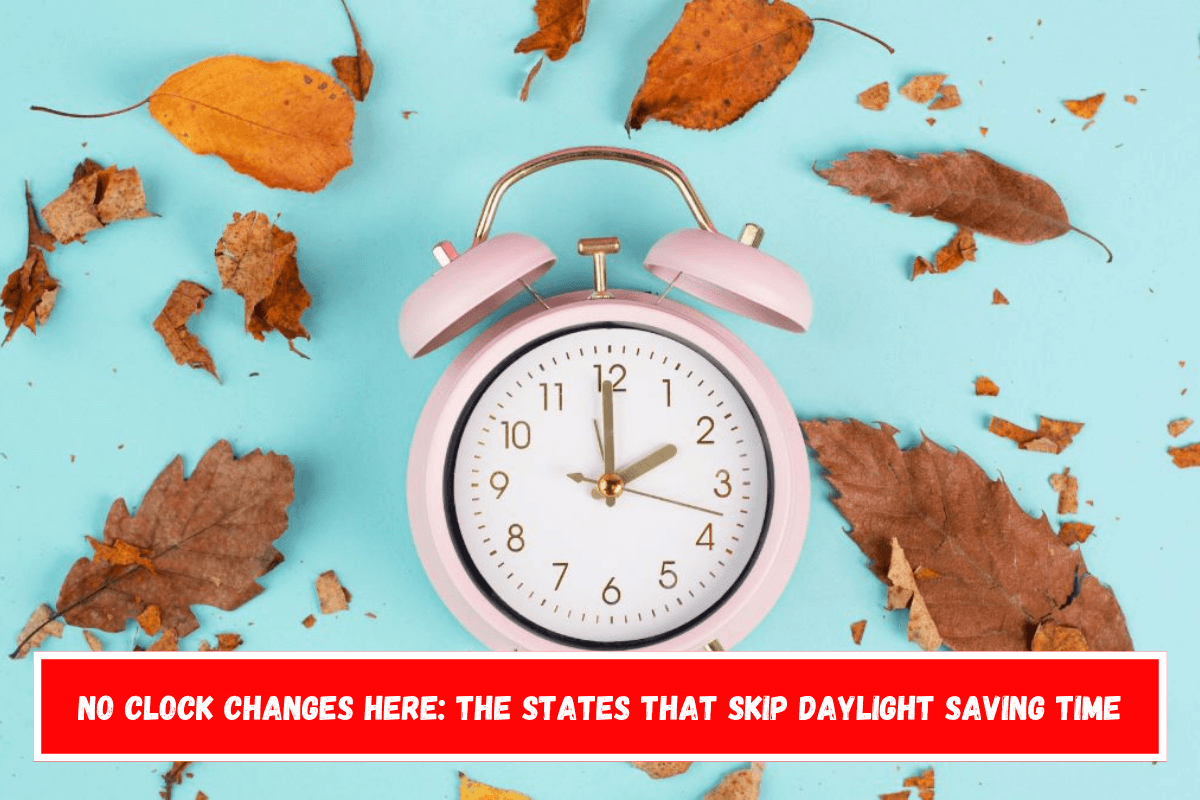Dayslight saving time ends on November 3, 2024. As the date gets near, it’s time to get ready for the annual change. You’ll need to turn your clocks back at exactly 2 a.m. on Sunday. This will give you an extra hour of sleep on Saturday night. What you may not know is that not all U.S. states follow this practice of “falling back” and “springing forward”?
Most of the country changes their clocks twice a year, but Arizona and Hawaii are the only two states that don’t. The people in these states have decided not to use daylight saving time.
Picture a peaceful evening in the Sonoran Desert, which is close to Phoenix, Arizona. The time stays the same all year in this beautiful area because neither Arizona nor Hawaii uses daylight saving time.
The problem of daylight saving time is still very controversial, and many other states want to change this long-standing practice. The goal is to make better use of the summer and spring sunshine. According to recent polls by the American Academy of Sleep Medicine, about 63% of Americans would rather not have daylight saving time at all.
- Arizona – Known for its scorching deserts and breathtaking landscapes, this state chooses to maintain a consistent time all year round.
- Hawaii – This tropical paradise enjoys a steady rhythm, untouched by the clock changes that affect much of the mainland.
The National Conference of State Legislatures says that bills or motions about daylight saving time are being actively considered or will be discussed in at least 30 states.
The Origins of Daylight Saving Time
In Hoffmaster State Park, a sandy path winds through dune grass and ends at the shores of Lake Michigan, where you can see a stunning sunset. This picture shows what daylight saving time is all about: it makes the days longer in the spring and summer.
In the US, time is changed every other year for daylight saving time. On the second Sunday of March, clocks are set ahead by one hour, and on the first Sunday of November, they are set back by the same amount of time.
Dispelling a Common Myth
A lot of people think that Benjamin Franklin came up with the idea of daylight saving time. Franklin did come up with a lot of new ideas, but this one wasn’t his. The Franklin Institute says that in his 1784 article called “An Economical Project,” Franklin only suggested that people in Paris change the times they slept to save money on candle and lamp oil.
Learning about the past of daylight saving time is like figuring out how to hang a complicated tapestry that was made over many years. The first country to do this was Germany, which did it during World War I to save energy in 1916. At the same time as Germany, the US switched to daylight saving time in 1918. This wartime measure didn’t last long, though; it was taken away seven months later.
The Evolution of Daylight Saving Time in the United States
This time change happened again in the United States during World War II. It started up again in 1942 under President Franklin D. Roosevelt and went on until the end of the war in 1945. This constant switching between time standards caused a lot of misunderstanding, as different states and cities chose between standard time and daylight saving time on their own.
The Uniform Time Act of 1966
The Uniform Time Act was passed by Congress in 1966 to try to bring some order to this crazy situation. The goal of this law was to make the every-two-year clock changes the same across the country. Hawaii and Arizona, in particular, decided not to use daylight saving time at all and instead kept standard time all year.
- 1916: Germany introduces daylight saving during World War I.
- 1918: The United States adopts daylight saving time, later repealing it.
- 1942-1945: Reintroduction during World War II under Franklin D. Roosevelt.
- 1966: Congress enacts the Uniform Time Act to standardize clock changes.
- Hawaii and Arizona: These states choose to remain on standard time year-round.
The NCSL says that since the Uniform Time Act was passed, there have been several changes to daylight saving time, mostly to the times of when it starts and ends. These changes show that the way people use their time is always changing as we try to find a balance between saving energy and the demands of modern life.
Curious about which states in the U.S. don’t participate in Daylight Saving Time?
Let’s dive into the unique choices of Arizona and Hawaii, along with some U.S. territories that have also opted out.
The Sunlit Choice of Hawaii
Due to their beautiful scenery, the Hawaiian islands have chosen not to observe Daylight Saving Time. This smart choice was made because the state is close to the equator, so daytime hours stay the same all year. Basically, the Aloha State doesn’t think it needs to change its clocks to account for small changes in daylight.
Arizona’s Practical Approach
Another state that has chosen not to use Daylight Saving Time is Arizona. In the beginning, Arizona tried this time change, but in 1968, the state legislature chose to end it. The thinking was very sensible: in the desert, adding more daylight hours meant using more energy, which was bad for the environment during the very hot summers.

U.S. Territories That Don’t Observe DST
Beyond these two states, several U.S. territories also choose not to observe Daylight Saving Time. These include:
- American Samoa
- Guam
- The Northern Mariana Islands
- Puerto Rico
- The U.S. Virgin Islands
Each of these regions has its own reasons for opting out, often related to their geographical location and the consistency of daylight hours.
Several states in the U.S. are pushing for a change to daylight saving time, even though the discussion is still going on. At the moment, federal law doesn’t let states switch to full-time daylight saving time, but many state legislatures are getting ready for the possibility of a change by proposing or passing related laws.
States Leading the Charge
Twenty states have passed laws or resolutions in the last six years that would let them switch to year-round daylight saving time, but only if the federal government agreed and sometimes if nearby states did the same. Here is a list of these early states:
- Oklahoma
- Colorado
- Kentucky
- Alabama
- Georgia
- Minnesota
- Mississippi
- Montana
- Idaho
- Louisiana
- Ohio
- South Carolina
- Utah
- Wyoming
- Delaware
- Maine
- Oregon
- Tennessee
- Washington
- Florida
Also See:- Can I apply for SNAP benefits and WIC payments in November?















Leave a Reply